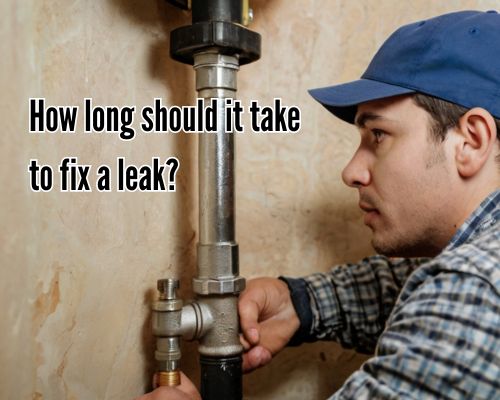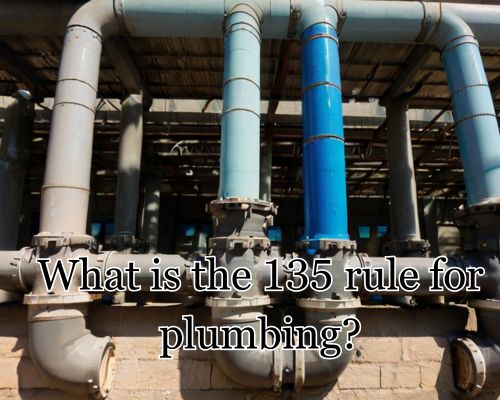Leaks are among the most common plumbing issues homeowners face, often appearing without warning and escalating quickly. If you’re in Warragul, Victoria, and wondering, “How long should it take to fix a leak?”, with Plumber Warragul, we will walk you through all the key factors—timeframes, types of leaks, causes, and what local professionals charge—so you can make informed decisions without overpaying or waiting too long.

Understanding Leak Types and Timeframes
Not all leaks are created equal. The time it takes to fix one depends heavily on the type of leak, location of the problem, and accessibility. In general, here’s a quick breakdown:
| Type of Leak | Average Time to Fix |
|---|---|
| Dripping tap (kitchen/bathroom) | 30 minutes – 1 hour |
| Toilet cistern leak | 45 minutes – 2 hours |
| Under-sink pipe leak | 1 – 2 hours |
| Wall-embedded pipe leak | 2 – 6 hours |
| Underground or slab leak | 1 day or more |
| Roof or ceiling leak | 2 – 4 hours (plus drying time) |
Each repair timeframe can vary based on your home’s plumbing system, water pressure, pipe material (e.g. copper vs. PVC), and even local regulations in Baw Baw Shire Council that may influence required repair standards.
Common Causes of Leaks in Warragul Homes
Understanding why leaks happen helps in determining how long repairs may take. Here are the most frequent causes for leaks in Warragul households:
- Aging Plumbing Systems: Many homes in the region are over 20 years old, often with outdated plumbing susceptible to pinhole leaks.
- Corrosion: The slightly acidic groundwater in Gippsland can corrode copper pipes over time.
- Tree Root Intrusion: Especially relevant in semi-rural areas like Drouin and Warragul, where trees like eucalypts and wattles invade underground pipes.
- Water Pressure Surges: High pressure from mains lines can strain joints and connections.
In each case, identifying the root cause can add extra time to the job if leak detection is required first.
Leak Detection: Adding Time Before Repair Starts
Before a plumber can fix a leak, they need to find it. Leak detection is a service on its own, especially important when the source isn’t visible. In Warragul, most licensed plumbers use methods like:
- Acoustic listening equipment
- Thermal imaging
- Moisture sensors
- Camera pipe inspections
On average, leak detection takes 30 minutes to 2 hours depending on the building’s size and leak severity. Some companies bundle this into the repair cost, while others charge separately—typically between $150–$300 AUD for leak detection in Gippsland.
Local Plumber Response Times in Warragul
One of the benefits of living in Warragul is access to a range of qualified plumbers servicing both metro and rural Victoria (see local plumbers).
…often offer same-day service or even 24/7 emergency response for urgent leak issues. The time to get someone onsite can affect your total repair window. For example:
- Urgent tap leak: Fixed within 2–4 hours from the time of your call.
- Non-urgent bathroom leak: Often scheduled for the next business day.
Repair Duration by Material and Accessibility
1. PVC vs Copper Pipes
PVC is easier to work with and faster to replace. Copper pipe repairs, especially when soldering is involved, can take up to twice as long—especially in tight wall cavities.
2. Accessibility
Leaks under flooring or behind walls often require cutting access panels, removing tiling or plaster, and restoring the area afterward. This can expand a basic 2-hour repair into a 6–8 hour process spread over multiple visits (including cleanup and drying time).
Costs vs. Time: What Warragul Homeowners Should Expect
Time is money, and with plumbing, the two go hand-in-hand. Here’s a rough pricing guide that correlates with repair times in the Warragul area:
| Repair Type | Time Estimate | Cost Range (AUD) |
|---|---|---|
| Simple Tap Replacement | 30 mins – 1 hour | $90 – $150 |
| Pipe Reseal | 1 – 2 hours | $150 – $300 |
| Shower Leak Repair | 2 – 4 hours | $250 – $500 |
| Wall Pipe Replacement | 4 – 6 hours | $400 – $700 |
| Slab Leak Repair | Full day+ | $800 – $2,000+ |
Warragul plumbing companies usually charge $90–$120 per hour for labour, and after-hours or weekend call-outs can include a surcharge of up to 50%.
When to Call the Professionals
While minor leaks (like a dripping tap) can sometimes be resolved with DIY kits from Warragul Bunnings, major leaks—especially those in walls or involving structural damage—should be addressed by a licensed plumber. In Victoria, it’s illegal to perform major plumbing work without proper certification, and doing so can void insurance.
Signs It’s Time to Hire a Pro:
- Water bill spikes
- Mould growth or musty smells
- Stains on ceilings or walls
- Drop in water pressure
Local Tips: Reducing Leak Repair Time
Here are some Warragul-specific homeowner hacks to streamline the repair process:
- Know where your mains water shutoff is – Save precious minutes during emergencies.
- Maintain good records – Keep any original plumbing plans from your builder or council.
- Use local tradespeople – Not only do they understand Gippsland’s water supply issues, but their proximity cuts response time.
- Schedule annual plumbing checks – Preventative maintenance can catch potential leaks early.
Final Thoughts: Leak Repair in Warragul is All About Time + Timing
To wrap it up: How long should it take to fix a leak? In Warragul, the answer depends on what’s leaking, where it is, how accessible it is, and whether your plumber is local and available. Minor leaks can be fixed in under an hour, but more complex problems could span several hours or days, especially when detection and wall/ceiling access are involved.
If you’re currently facing a leak, don’t wait. Water damage compounds fast, and the costs multiply. Contact a Warragul plumbing professional for a quick quote, and always verify they are licensed under the Victorian Building Authority (VBA).
